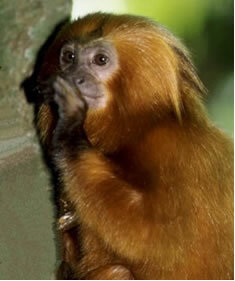Considered one of the most threatened biomes on the planet, the Atlantic forest it is the most devastated natural domain in Brazil. It extends from Piauí to Rio Grande do Sul and corresponded to approximately 15% of the national territory, however, the intense devastation of this biome for planting sugarcane, coffee, mining and other economic activities have drastically reduced this vegetation cover, leaving currently only 7% of the original forest, located mainly in the Serra do Mar.
THE Atlantic forest is composed of a set of physiognomies and forest formations, with distinct ecological structures and interactions in each region, it is in the transition range with the most important biomes in Brazil: caatinga, cerrado, mangroves, countryside and plateaus of Araucaria.
Its predominant climate is humid tropical, however, there are other microclimates throughout the forest. It has high average temperatures throughout the year and the average relative humidity is also high. Rainfall is regular and well distributed in this biome. As for the relief, it is characterized by plateaus and mountains.
The hydrographic importance of the Atlantic Forest is great, as this region is home to seven of the nine largest basins the country's hydrographic basins, including: Paraná, Uruguay, Paraíba do Sul, Doce, Jequitinhonha and São Francisco.
This biome is one of the richest in the world in terms of flora and fauna. Its vegetation is very diverse and is represented by peroba, ipê, quaresmeira, cedar, jambo, jatobá, imbaúba, jequitibá-rosa, jacarandá, pau-brasil, among others. These last two (jacarandá and pau-brasil) are the main target of the logging activity, a fact that caused its reduction and almost extinction.

lion tamarin
The fauna has several different species, many of which are endemic, that is, they are found only in the Atlantic Forest. Among the animals of this biome are: anteater, giant armadillo, jaguar, otter, lion tamarin, muriqui monkey, tapir, deer, coati, agouti, sloth, opossum, mono-carvoeiro, arapanga, jacutinga, guan, macuco, among many others.
There is a great need for public policies to preserve the Atlantic forest, since of the original area of this biome (1.3 million km²) only 52,000 km² remain. Another factor is the number of endangered species: of the 200 endangered Brazilian plant species, 117 are from this biome. According to data from the Brazilian Institute for the Environment and Renewable Natural Resources (IBAMA), the Atlantic Forest is home to 383 of the 633 animals threatened with extinction in Brazil.
By Wagner de Cerqueira and Francisco
Graduated in Geography
Source: Brazil School - https://brasilescola.uol.com.br/brasil/mata-atlantica1.htm
